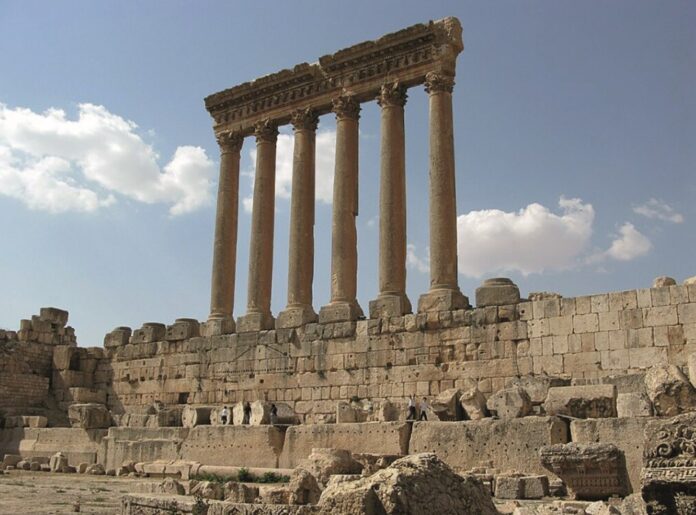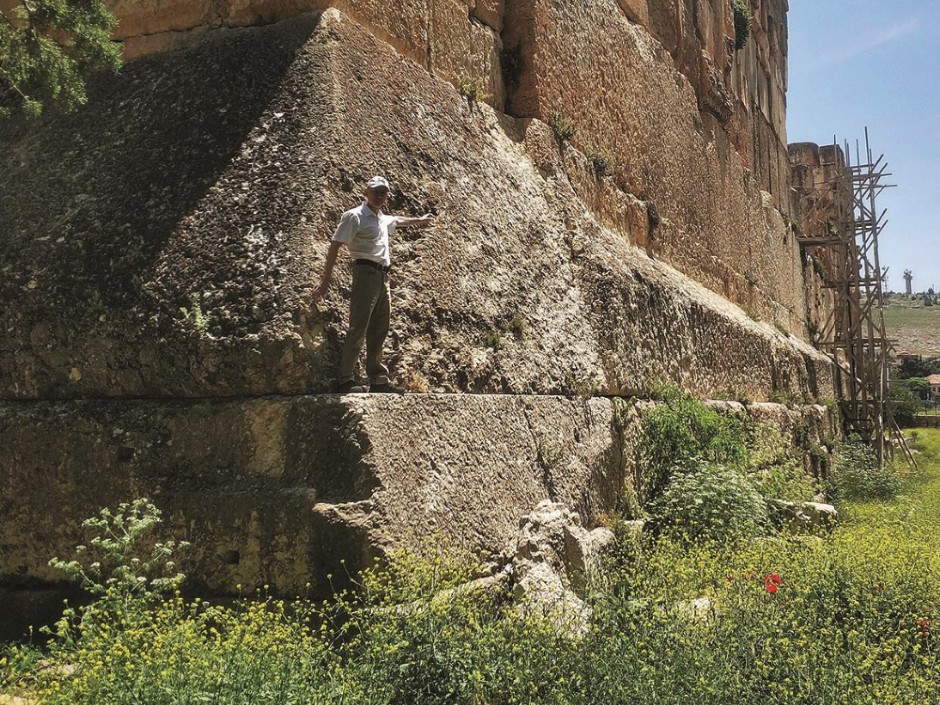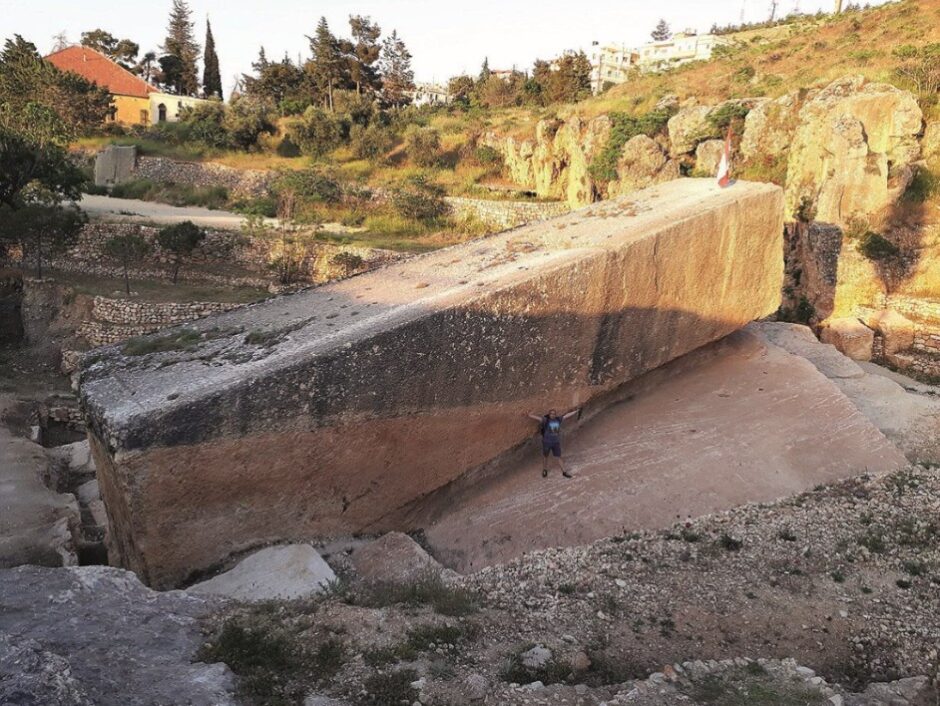The Romans, whose empire dominated Europe 2000 years ago, were renowned for their magnificent and ingenious feats of architecture and engineering.
The Temple of Jupiter, in the city of Baalbek in Lebanon, was the largest temple complex they built, and it’s still impressive even in its ruined state.
The Temple of Jupiter is actually most famous not for its splendid architecture, but for the platform on which it’s built. The platform measures some 88 metres by 48 metres, and is constructed of gigantic limestone blocks known as megaliths. Some of these blocks measure 20 metres long by 5 metres wide by 4 metres high —that is, about the size of four double-decker buses. They’re elegantly shaped, perfectly aligned and so flush fitting that there’s hardly room to slide a piece of paper between them; their tooled edges are straight and crisp, and despite their immense age some surfaces still have a polished appearance. It would be difficult to achieve such precision on such a huge scale, even with today’s technology.
Whose Work?
It’s generally assumed that the megaliths were built by the Romans themselves, because no previous civilisation is known that was as technically advanced as them. But many archaeologists are dissatisfied with this assumption.
• The temple is in a relatively remote location, nearly 4000 kilometres from the centre of the empire, suggesting that it was built in this location because it was a previously sacred site.
• The megaliths are manifestly the finest stonework in the entire temple complex, and yet they’re largely out of view. And the most ornate megaliths are at the rear of the temple complex, away from the main entrance, which would be odd if they were designed as part of the Roman structure.
• The quality of the megaliths’ stonework is far superior to anything in evidence anywhere else among Roman ruins.
• There’s no indication that the Romans could work with this size of cut stone. The biggest block in the temple building weighs around 90 tonnes. Engineers are fairly confident they know how it could have been raised into position using the technology available at the time. But some of the megaliths have been calculated to weigh over 800 tonnes, and no one has any idea how they were raised into position.
All these factors strongly indicate that the Romans built their Temple of Jupiter on a ready-made platform. So who made it?
Nobody has any idea. But there’s a local legend that the megaliths were the work of people who lived before Noah’s Flood. This is an intriguing thought.
The World of Noah
We know very little about the 1500-year history of the world before the Flood, only what we’re told in the first six chapters of the Bible’s first book, Genesis. We know that people became increasingly wicked, and also that they had immense life spans—approaching a thousand years. It’s very plausible that they could have developed the highly sophisticated technology that produced the Baalbek megaliths.
It seems that the megalithic structure was intended to be much more than a platform. The quarry from which the stones were taken is still in existence—it’s a huge crater, about a kilometre away. It appears that work was abruptly abandoned. The quarry contains a number of partly finished megaliths, including one that’s inclined as though it was in the process of being moved when work stopped.
Whoever built the megaliths, it’s difficult to imagine their ancient world, or what kind of gargantuan structure they were setting out to build. But human nature doesn’t change: it was no doubt some kind of expression of their pride in themselves.
Jesus Christ taught that we need to be ready for his return. There will be a judgement on our world, and he compared it to the judgement on the world of Noah. When it comes, the brilliance and might of our 21st Century civilisation will be useless to withstand it.
But concerning that day and hour no one knows, not even the angels of heaven, nor the Son, but the Father only. For as were the days of Noah, so will be the coming of the Son of Man. For as in those days before the flood they were eating and drinking, marrying and giving in marriage, until the day when Noah entered the ark, and they were unaware until the flood came and swept them all away, so will be the coming of the Son of Man (Matthew 24:36–39).
Doug Potts



